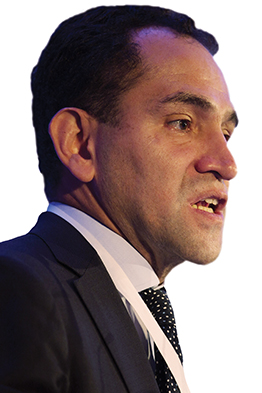Mexico's deputy finance minister prepares for poverty fight
Mexico’s deputy finance minister, Arturo Herrera, talks to Jane Monahan about how the country’s new government plans to effect social change through economic policy.
Mexico’s new left-wing president, Andrés Manuel López Obrador, was sworn in on December 1, 2018, vowing to embark on a “profound and radical” transformation of the country to improve the lives of the poor. Some investors are still wondering what this means for business, because shortly after inauguration the new government officially halted works on Mexico City’s new $13bn airport. The Banker talked to one of the most senior officials in the new administration, deputy finance minister Arturo Herrera, a former World Bank executive, about the government’s commitment to reducing inequality across the country.
Q: Some investors are wary of the new government’s approach to economic policy and its potential interference with the central bank. What is your response to these concerns?
A: We have been insisting that we want to tackle the issue of low growth. We want to tackle issues of inequality, poverty, a lack of financial inclusion. But we want to do everything in a very responsible way. So the budget we have just presented has a primary surplus of 1% of gross domestic product [GDP]. That’s very important in terms of fiscal policy. But the other important aspect of Mexican economic policy is monetary policy, and for that it is important to have an independent central bank. One thing we are not going to mess up is the central bank. We like the central bank such as it is. We understand how valuable it is for the Mexican economy, and we will support the independence of the central bank.
Q: What about the much-criticised decision by Mr López Obrador to cancel the Mexico City airport project? Has the page been turned on that dispute?
A: On the first day of business of this government we put out a request to contact bondholders [who invested in the airport project] and we offered to buy back $1.8bn. We actually closed that operation successfully recently so we were able to turn the page with the bondholders. We are also reimbursing whatever construction companies lost on the project. And these companies have plenty of other opportunities [to invest in Mexico’s infrastructure].
Q: What are your views on the new North American Free Trade Agreement, known as Nafta 2.0 or USMCA?
A: We feel reasonably confident that Nafta 2.0 [agreed by the leaders of Mexico, Canada and the US on November 30, 2018] is going to be signed [into law]. But one of the things that we need to do is build roads, railways and ports in order to tap into that potential economic growth that is coming, and that originates from the fact that we are neighbours to the number one economy in the world. We really need to make a little bit more out of that.
Q: What are the principal challenges that the new government is facing?
A: One of two most important challenges is the lack of meaningful economic growth. Just to give you some context, in the past 27 years the Mexican economy has been growing at an average annual rate in real terms of 2.4%. But with an average population growth rate during the same period of 1.5%, that means that GDP per capita has been growing a little bit below 1%. That pace is lower than any other major peer in the region: Brazil, Colombia, Argentina and even Uruguay. So one of the big questions is how to change this pace of growth.
The other problem, which is related to some extent, is the issue of inequality. Within Mexico there is also regional inequality. The GDP per capita in Mexico City, the most developed area, is six times the GDP per capita of [southern state] Chiapas. That’s a similar difference to between Mexico and Tanzania. So when we talk about Mexico we are talking about at least two Mexicos.
Q: How is the government planning to tackle Mexico’s large informal economy, and a poverty rate of above 40%?
A: The idea is to support some of the most vulnerable sectors. One approach we are taking is providing a pension system for everyone over 60. That’s a minimum, unconditional pension. The logic for this is very clear. Even nowadays only about two-thirds of the population works in the formal economy. That means that people outside it, when they retire, have no pension. Moreover, of the roughly 66% of the population that does work in the formal sector, one-third of them have part-time jobs, which means employers don’t have to pay social security for them so they won’t have a pension either. It is an issue that has to be addressed.



